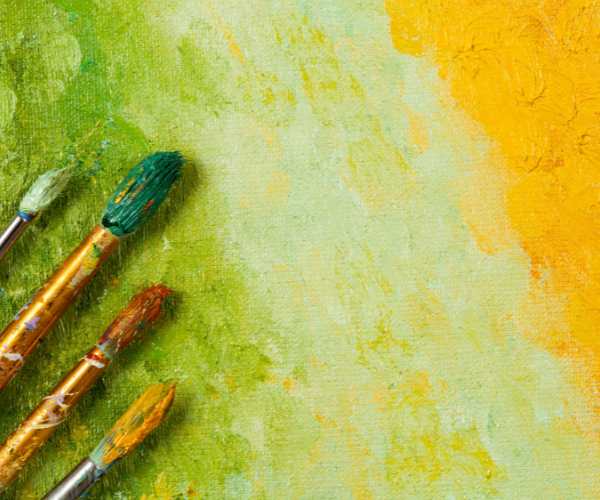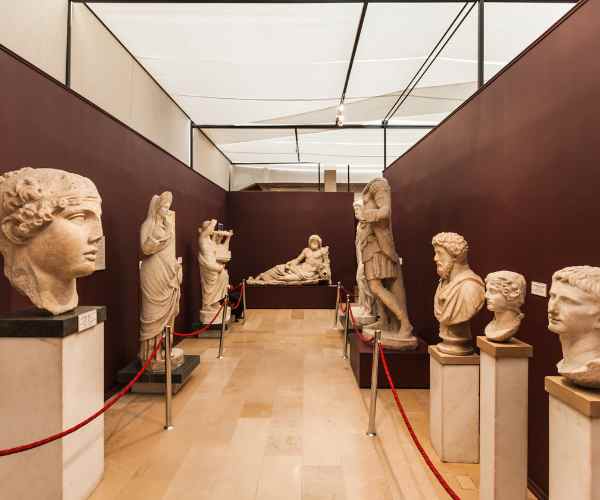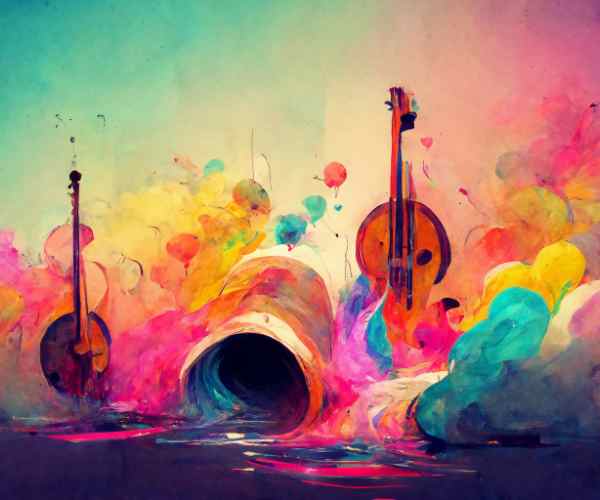Brushes are like the magic wands of the art world.
They hold the power to transform a blank canvas into a vivid landscape, a whimsical character, or an abstract wonder.
When I first picked up a paintbrush, I was captivated by the sheer potential it represented.
But it wasn’t until I experimented with different types of brushes that I truly began to understand their significance.
I remember a specific moment during a weekend painting workshop where I was struggling with a landscape piece.
I had been using a standard round brush, and the results were, well, pretty flat.
A fellow artist sat next to me, effortlessly layering colors with a filbert brush—its unique shape allowing for both soft edges and fine details.
She noticed my frustration and invited me to try hers.
As I switched brushes, the transformation was instant.
The filbert allowed me to create soft clouds and textured trees with so much more depth.
In that moment, I realized how crucial brushes are not just as tools but as essential partners in the artistic process.
They affect texture, detail, and overall style in ways that can elevate our work from ordinary to extraordinary.

Types of Brushes and Their Uses
Let’s delve into the wonderful world of brush types and their uses!
Each brush carries its own unique characteristics, shaping how we apply paint and the effects we achieve.
Round Brushes
Round brushes are like the versatile friends we all need in our artistic journeys.
They come to the rescue when we want to create fine lines or delicate details.
I often reach for a round brush when I’m painting portraits; it’s perfect for adding those intricate facial features that bring a character to life.
Famous artists like Vincent van Gogh favored round brushes for their ability to create expressive strokes that lend a sense of movement to their work.
Flat Brushes
Flat brushes, on the other hand, are excellent for broad strokes and filling in large areas of color.
They are fantastic for creating bold lines and sharp edges, making them a go-to for landscape painters.
I recall attending an art class where the instructor demonstrated how to use a flat brush to paint a sunset.
With just a few sweeping motions, she effortlessly blended the colors, producing a stunning gradient across the canvas.
Flat brushes allow for such a wide range of effects; you can create smooth blends or add sharp details, depending on how you hold them.
Fan Brushes
Fan brushes are a bit quirky and often overlooked, but they have their own charm.
With their unique shape, they are perfect for creating textures like foliage or hair.
I remember experimenting with a fan brush to depict the leaves of a tree in one of my pieces.
The results were impressive, giving a sense of dimension and life that a regular brush just couldn’t replicate.
Artists like Claude Monet used fan brushes to create beautiful, textured effects in their works, capturing the essence of nature in a few flicks.
Filbert Brushes
Filbert brushes combine the best of both round and flat brushes.
They have a unique oval shape that allows for both broad strokes and fine details.
When I first started using filbert brushes, I was amazed at how they helped me achieve soft edges while still allowing for precision.
Artists like Georgia O’Keeffe were known for their use of filbert brushes, enabling them to create those stunning flower petals that seem to pop right off the canvas.
Natural vs. synthetic brushes
Now, let’s talk about natural versus synthetic brushes.
Natural brushes, made from animal hair, have a unique softness that allows for beautiful blending and fluid strokes.
They tend to hold more paint, which can be fantastic for certain techniques.
I’ve found that when I use a natural brush for watercolor painting, the results are often more luminous and vibrant, as the brush effortlessly glides across the paper.
However, they can be pricier and require a bit more care.
On the flip side, synthetic brushes are durable and often more affordable.
They are excellent for acrylics and oils, especially for those of us who might be a bit rougher on our tools!
I once made the switch to synthetic brushes for a large mural project, and I was pleasantly surprised by how well they performed.
They provided the stiffness I needed for bold strokes while still allowing for some flexibility.
In short, the choice between natural and synthetic brushes often depends on the medium you’re working with and the effects you want to achieve.
Specialty brushes
Let’s not forget about specialty brushes!
These are the fun tools in the artist’s toolbox, each serving unique applications that can really elevate your artwork.
Palette knives are fantastic for applying thick layers of paint or creating sharp lines.
I love using them when I want to add texture or when I’m working with impasse techniques.
Their flexibility allows for a variety of effects, and I find it exhilarating to mix colors right on the canvas!
Then there are sponge brushes, which can create unique textures that mimic natural elements.
I once used a sponge brush to create the illusion of clouds in a sky.
With just a few dabs, I achieved a fluffy, airy look that a traditional brush couldn’t replicate.
These specialty brushes are invaluable tools that can add unexpected depth and dimension to your work.
Techniques for Utilizing Brushes Effectively
When it comes to painting, the techniques we use with our brushes can completely change the final outcome of our work.
I remember the first time I experimented with dry brushing.
It was a rainy Saturday afternoon, and I had decided to tackle a still-life painting of some flowers I had picked from my garden.
With my usual round brush, I started to layer colors, but the result felt flat.
Then, I recalled hearing about dry brushing during an art workshop.
Curious, I grabbed a stiff bristle brush, wiped most of the paint off, and gently stroked it across the canvas.
Suddenly, the texture of the petals popped!
The dry brush technique created a soft, ethereal effect that added depth to my flowers.
This technique is fantastic for creating highlights or adding texture without overwhelming the canvas with paint.
Another technique I love is glazing.
It’s all about layering transparent colors to create a luminous effect.
One of my favorite pieces uses glazing to achieve a sunset sky.
I laid down a thin layer of blue paint first, then added delicate washes of orange and pink on top.
Each layer dried beautifully, allowing the colors to shine through without losing the depth of the blue beneath.
Artists like John Singer Sargent are known for their skillful glazing techniques that make their portraits feel alive.
Then there’s stippling, a technique that’s as much fun as it is effective.
This method involves applying small dots of color with a brush to create texture and depth.
I once tried stippling on a landscape piece, using a small round brush to add detail to the grass and flowers.
The tiny dots created a vibrant, lively field that drew the viewer’s eye.
Each technique has its own unique charm and can dramatically affect the way we express our artistic vision.
Layering with Brushes
Layering is at the heart of many painting techniques, and understanding its importance can elevate your artwork to new heights.
When I first started painting, I often rushed through my pieces, thinking that more paint equals a more finished product.
However, I learned that layering is about patience and subtlety.
Each layer of paint adds depth and dimension, allowing the viewer to engage more deeply with the artwork.
For instance, when working on a portrait, I often start with an underpainting using a monochromatic palette.
This initial layer helps establish the tonal values of the piece.
Then, I build upon that foundation with various colors, each applied carefully to enhance the features and shadows.
Using different brushes for layering can make a huge difference.
Flat brushes are excellent for covering large areas quickly, while round brushes allow for fine details.
This combination not only creates a sense of depth but also invites the viewer to explore the nuances of the painting.
Texture and Brushwork
Texture is one of the most powerful elements in art, and different brushes can help achieve a range of effects.
When I think of textured paintings, one of my all-time favorites is Van Gogh’s “Starry Night.”
The swirling patterns in the sky come to life through his dynamic brushwork.
He often used thick impasto techniques with a palette knife, but he also applied texture using various brushes, each stroke contributing to the vibrant energy of the scene.
For my own work, I love using a fan brush to create foliage in landscapes.
The unique shape allows for quick, flicking motions that mimic the natural chaos of leaves and branches.
Just a few strokes can suggest an entire tree, and that sense of spontaneity adds a wonderful texture that flat brushes simply can’t replicate.
In contrast, a fine round brush can add intricate details, like the delicate petals of a flower or the subtle ripples in water.
These brushes enable me to create a visual dialogue between the different elements in my paintings.
Ultimately, exploring different brushes and techniques is all about finding what resonates with your artistic style and vision.
FAQs
What types of brushes should beginners start with?
When you’re just starting your artistic journey, it can be overwhelming to choose the right brushes.
I remember standing in the art supply store, staring at a wall of brushes, feeling a mix of excitement and confusion.
As a beginner, I’d recommend starting with a basic set that includes a flat brush, a round brush, and a detail brush.
Flat brushes are fantastic for covering larger areas and creating sharp edges.
Round brushes are versatile; they can create fine lines or broader strokes depending on how much pressure you apply.
A detail brush is perfect for those intricate touches that can make your artwork pop.
It’s all about getting comfortable with how each brush feels and how it interacts with the paint.
As you gain more experience, you can branch out and experiment with specialty brushes to discover what works best for you!
How do I clean and maintain my brushes for longevity?
Cleaning brushes might not seem like a fun task, but trust me, it’s worth it!
When I first started painting, I often neglected my brushes, thinking they’d be fine.
Unfortunately, I ended up with stiff bristles that couldn’t hold paint anymore.
The key is to clean your brushes immediately after use.
For acrylics, simply rinsing them under water and gently rubbing the bristles with your fingers will do the trick.
With oils, you’ll want to use a solvent like turpentine or mineral spirits, followed by washing with soap and water.
Always reshape the bristles and lay them flat to dry.
This simple maintenance routine can extend the life of your brushes significantly, ensuring they’re always ready for your next masterpiece!
Can I use the same brushes for different mediums?
It’s definitely possible to use the same brushes for different mediums, but there are some important considerations.
When I first ventured into acrylic painting, I didn’t realize how different it was from watercolors.
While you can use the same brushes, you might find that some are better suited for specific mediums.
For instance, natural bristle brushes work well with oils because they hold more paint, while synthetic brushes are typically better for acrylics and watercolors.
If you do decide to use the same brushes across mediums, just be diligent about cleaning them thoroughly in between uses to avoid any cross-contamination of colors or residues.
How do brushes affect the final look of my artwork?
Brushes play a crucial role in the final appearance of your artwork, and they can transform your piece from ordinary to extraordinary!
I vividly recall a time when I was working on a textured abstract painting.
Using a palette knife for certain areas created a dramatic effect, but then I switched to a soft round brush to blend some colors.
The contrast between the two techniques added depth and movement, drawing the viewer’s eye across the canvas.
Different brushes can create varied textures, lines, and details, which all contribute to the overall feel of your artwork.
So, when you’re choosing a brush, think about how it aligns with the mood you want to convey.
What should I consider when selecting brushes for a specific project?
Selecting the right brushes for a project involves considering several factors.
First, think about the medium you’re using—whether it’s acrylic, watercolor, or oil.
Then, consider the effects you want to achieve.
For example, if you’re painting a landscape, you might want a variety of brushes to create different textures in the foliage, sky, and water.
I often ask myself what kind of detail I need to achieve—if I’m focusing on intricate patterns, a detail brush will be essential.
Lastly, consider your own comfort with the brush type.
Using brushes that feel good in your hand will make the painting process much more enjoyable!
Conclusion
Understanding brushes is essential for any artist looking to achieve different artistic effects.
The right brush can make all the difference in how you express your vision on canvas.
As you explore the vast world of brushes, I encourage you to experiment and find what works best for you.
Try out different types, techniques, and mediums—you might discover something new that speaks to your artistic style.
Remember, brushwork has the power to transform a blank canvas into a vibrant story, so embrace it!
Art is about exploration and self-expression, and your brushes are your voice in that journey.
Let them guide you as you create beautiful, meaningful artwork!



